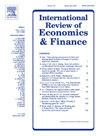扎根还是扩张?数字物理技术集成对企业知识广度的影响
IF 5.6
2区 经济学
Q1 BUSINESS, FINANCE
引用次数: 0
摘要
在数字经济推动传统产业深度转型的背景下,企业如何重构知识体系以实现创新突破面临着严峻挑战。本研究探讨数位实体整合是否及如何影响企业知识广度的核心问题。利用中国上市公司的面板数据,构建了企业层面的数字物理整合和知识广度指标。通过双向固定效应模型、工具变量法和倾向得分匹配进行分析。此外,我们考察了三种中介机制——动态能力、资产新颖性和全要素生产率,以揭示整合发挥其影响的途径。结果表明,数字物理集成显著促进了企业知识广度的扩展。这一发现在各种内生性控制和敏感性检查中仍然是稳健的。机制分析表明,整合通过增强企业动态能力、优化资源配置模式和提高生产率间接推动知识结构的外部重构。异质性分析进一步表明,在非技术密集型企业、非国有企业、人力资本较高地区的企业和知识产权保护较弱地区的企业中,这种效应更为明显。通过将分析焦点转移到知识组织,本研究加深了对数字化转型后果的理解,扩展了企业知识演进和技术整合的理论边界。研究结果还为制定差异化数字战略的决策者和旨在建立有效知识协调系统的企业提供了实际见解。本文章由计算机程序翻译,如有差异,请以英文原文为准。
Rooted or expansive? The impact of digital-physical technological integration on corporate knowledge breadth
Amid the deep transformation of traditional industries driven by the digital economy, firms face a critical challenge in restructuring their knowledge systems to achieve innovation breakthroughs. This study investigates the core question of whether and how digital-physical integration affects corporate knowledge breadth. Using panel data of Chinese listed firms, we construct firm-level indicators for digital-physical integration and knowledge breadth. The analysis is conducted through two-way fixed effects models, instrumental variable methods, and propensity score matching. Furthermore, we examine three mediating mechanisms—dynamic capability, asset novelty, and total factor productivity to uncover the pathways through which integration exerts its influence. The results show that digital-physical integration significantly promotes the expansion of corporate knowledge breadth. This finding remains robust across various endogeneity controls and sensitivity checks. Mechanism analysis reveals that integration indirectly drives the external restructuring of knowledge structures by enhancing firms’ dynamic capabilities, optimizing resource allocation patterns, and improving productivity. Heterogeneity analysis further indicates that the effect is more pronounced among non-technology-intensive firms, non-state-owned enterprises, firms located in regions with higher human capital, and those in areas with weaker intellectual property protection. By shifting the analytical focus to knowledge organization, this study deepens the understanding of the consequences of digital transformation and extends the theoretical boundaries of corporate knowledge evolution and technological integration. The findings also offer practical insights for policymakers designing differentiated digital strategies and for firms aiming to build effective knowledge coordination systems.
求助全文
通过发布文献求助,成功后即可免费获取论文全文。
去求助
来源期刊
CiteScore
7.30
自引率
2.20%
发文量
253
期刊介绍:
The International Review of Economics & Finance (IREF) is a scholarly journal devoted to the publication of high quality theoretical and empirical articles in all areas of international economics, macroeconomics and financial economics. Contributions that facilitate the communications between the real and the financial sectors of the economy are of particular interest.

 求助内容:
求助内容: 应助结果提醒方式:
应助结果提醒方式:


